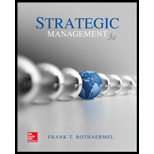
To explain: How a relationship changes when a multinational enterprise changes from globalization 2.0 to globalization 3.0 operations.
Explanation of Solution
Changes in a relationship when a multinational enterprise changes from globalization 2.0 to globalization 3.0 operations:
The transition of moving a firm from vertical integration to dividing the integrated firm into the functional departments can be related to the transition from globalization 2.0 to globalization 3.0 operations. In globalization 2.0 the multinational enterprises were required to duplicate their operations into the overseas markets. But, this strategy resulted in the wastage of resources.
In globalization 3.0, a multinational enterprise can select the different location that will be best suited for the supply chain activities. After choosing the specific location, operations will be shifted to the particular location. Each of the major operations of a firm such as finance, marketing, operations, and human resources will be in different countries and so on. Hence, in globalization 3.0 a network kind of supply chain is created even though it means it is outside the organizational boundary.
Want to see more full solutions like this?
- Krispy Kreme Doughnuts Inc 2015 Write a introduction about the company’s background using your own words, which describes the company’s background, including its industry and extent of its multinational reach for identifying expansion factors and corporate strategiesarrow_forwardPrepare to discuss an multinational enterprise's (MNE’s) decision to expand into new areas. Discuss the following scenario: After becoming the president of the multinational enterprise (MNE), your board of directors has instructed you to begin the process of expanding to the Asian Pacific market. What market opportunities, sourcing advantages, strategic imperatives, and transnational strategies should you consider when expanding abroad?arrow_forwardTravelling and working internationally can lead to a life of adventure and unique career experiences. For businesses, selecting the right candidates to take on foreign assignments can propel, delay, or deny the success of the international ventures. As an international manager, identify key competencies you would look for in choosing expatriates. What might be some of their concerns in taking on overseas assignments? What are some best practices in supporting expats during and after their assignments?arrow_forward
- Traveling and working internationally can lead to a life of adventure and unique career experiences. For businesses, selecting the right candidates to take on foreign assignments can propel, delay, or deny the success of international ventures. As an international manager, identify key competencies you would look for in choosing expatriates. What might be some of their concerns in taking on overseas assignments? What are some best practices in supporting experts during and after their assignments?arrow_forwardThe forms of market entry that you should consider are: export, import, subsidiaries, merger, acquisition, alliances (joint ventures), licensing and franchises. Explain how the VRIO model can help the leader to develop a strategic plan for the internationalization of the company. Briefly explain the multinational structures taking into account the company Coca Cola, Inc.arrow_forwardIf you owned a business and you decided that it was time to expand globally, what globalization strategy would you consider? Why?arrow_forward
- How can values, cultural competence, ethics, and understanding of international business best practices aligns with or differs from those of a MNC?arrow_forwardWhat responsibility do businesses have to developing economies, workers, and the environment when they choose to pursue global strategies? Do you think corporations like Apple, which has a well-developed global supply chain, have done enough to manage the potential negative effects of their globalized operations?arrow_forwardIncreased global interaction has been promoted by advanced technology in communication, ideas and culture, which largely encourages and facilitates international trading. Businesses go abroad in seeking better financial incentives, stronger networks, and markets of opportunities. But at the same time, the complexities in terms or risks involved in international operation are more than domestic firms -Discuss how to manage cultural risks and other factors related to a foreign operation of a multinational business. Is cultural, business, or political risk more challenging to overcome than one of the others? Why or why not? How should American standards influence multinational businesses?arrow_forward
- What is the difference between going "multinational" and "transnational." What would that look like for a US hospitality company? What are the benefits and drawback of each approach and which approach would you recommend?arrow_forwardWhy should a multinational organization operate as a tightly integrated, worldwide business system?arrow_forwardYou are the CEO of Elegant Electronix and you are contemplating expanding in Japan .You have all the resources to start from scratch in that country .Discuss the many advantages to initiating , continuing and or expanding international operations. outline disadvantages alsoarrow_forward
 Understanding BusinessManagementISBN:9781259929434Author:William NickelsPublisher:McGraw-Hill Education
Understanding BusinessManagementISBN:9781259929434Author:William NickelsPublisher:McGraw-Hill Education Management (14th Edition)ManagementISBN:9780134527604Author:Stephen P. Robbins, Mary A. CoulterPublisher:PEARSON
Management (14th Edition)ManagementISBN:9780134527604Author:Stephen P. Robbins, Mary A. CoulterPublisher:PEARSON Spreadsheet Modeling & Decision Analysis: A Pract...ManagementISBN:9781305947412Author:Cliff RagsdalePublisher:Cengage Learning
Spreadsheet Modeling & Decision Analysis: A Pract...ManagementISBN:9781305947412Author:Cliff RagsdalePublisher:Cengage Learning Management Information Systems: Managing The Digi...ManagementISBN:9780135191798Author:Kenneth C. Laudon, Jane P. LaudonPublisher:PEARSON
Management Information Systems: Managing The Digi...ManagementISBN:9780135191798Author:Kenneth C. Laudon, Jane P. LaudonPublisher:PEARSON Business Essentials (12th Edition) (What's New in...ManagementISBN:9780134728391Author:Ronald J. Ebert, Ricky W. GriffinPublisher:PEARSON
Business Essentials (12th Edition) (What's New in...ManagementISBN:9780134728391Author:Ronald J. Ebert, Ricky W. GriffinPublisher:PEARSON Fundamentals of Management (10th Edition)ManagementISBN:9780134237473Author:Stephen P. Robbins, Mary A. Coulter, David A. De CenzoPublisher:PEARSON
Fundamentals of Management (10th Edition)ManagementISBN:9780134237473Author:Stephen P. Robbins, Mary A. Coulter, David A. De CenzoPublisher:PEARSON





